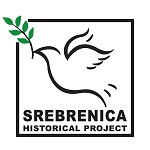Everyone involved in Srebrenica research is aware of the NIOD Report which was published in 2002 by the Nederlands Instituut voor Oorlogsdocumentatie [Netherlands Institute for War Documentation, http://www.niod.nl/] in 2002. The Report, which focuses on the tragic events in Srebrenica in July of 1995 is universally regarded as a first rate research and documentation tool. It has been relied on by historians, commentators, and legal experts.
The Report came about in a very interesting way. Soon after allegations of Dutch responsibility, and even complicity, in the Srebrenica massacre were made the matter became a controversial political topic in the Netherlands. The Dutch government were facing the prospect of a politically motivated parliamentary inquiry into the role and conduct of Dutch military personnel during their presence in the UN-protected Srebrenica enclave in 1994 and 1995. It is speculated that in order to avoid further politicisation of the issue the Dutch government assigned the task of sorting out what happened in Srebrenica and its background to a respected neutral scholarly institution, the Netherlands Institute for War Documentation, also known as NIOD. It should be noted that NIOD’s principal research and documentation focus before it received this task was the World War II occupation of the Netherlands and of the Dutch East Indies. Srebrenica was a somewhat out of character assignment and it was entrusted to a team of scholars headed by the distinguished Dutch historian, Professor Hans Blom.
However one chooses to assess the final product, known as the “NIOD Report on Srebrenica”, its depth and meticulous detail are undeniable. The motives of the Dutch cabinet may have been political in seeking to avoid a parliamentary commission on Srebrenica, but the end result certainly reflects a high level of scholarship and it is refreshingly non-political.
Oddly, it is precisely the objective, non-political character of the NIOD Report which has drawn criticism from those who expected something else from it. A case in point is the following reaction reported by the BBC almost as soon as the Report was published:
“Mrs Catic said the protesters would meet again with the NIOD director, Hans Blom, in an attempt to persuade him to revise the findings – especially an assertion that half of those killed had fought in the Bosnian Muslim army. They also denounced the conclusions that there was no evidence to link former Yugoslav President Slobodan Milosevic to the massacre, and that the role of Bosnian Serb leader Radovan Karadzic was unclear.” [1]
One is compelled to say that it is to Professor Blom’s credit that on that occasion he refused to modify his scholarly team’s findings to make it acceptable to parties in the Bosnian conflict or to “clarify” the role of targeted defendants, which is a task for courts rather than historians.
“Srebrenica Historical Project” continues to insist that the complex events in and around Srebrenica in July of 1995 should be studied from an objective and scholarly perspective and without political preconceptions. The NIOD Report is a document of great significance to a better understanding of Srebrenica which we recommend to our readers as a reference in their own research. We make frequent reference to it as a source on this website and are therefore pleased to make it available as a Srebrenica research tool to our readers.
Endnote:
[1] http://news.bbc.co.uk/2/hi/europe/1923884.stm
The NIOD Report
